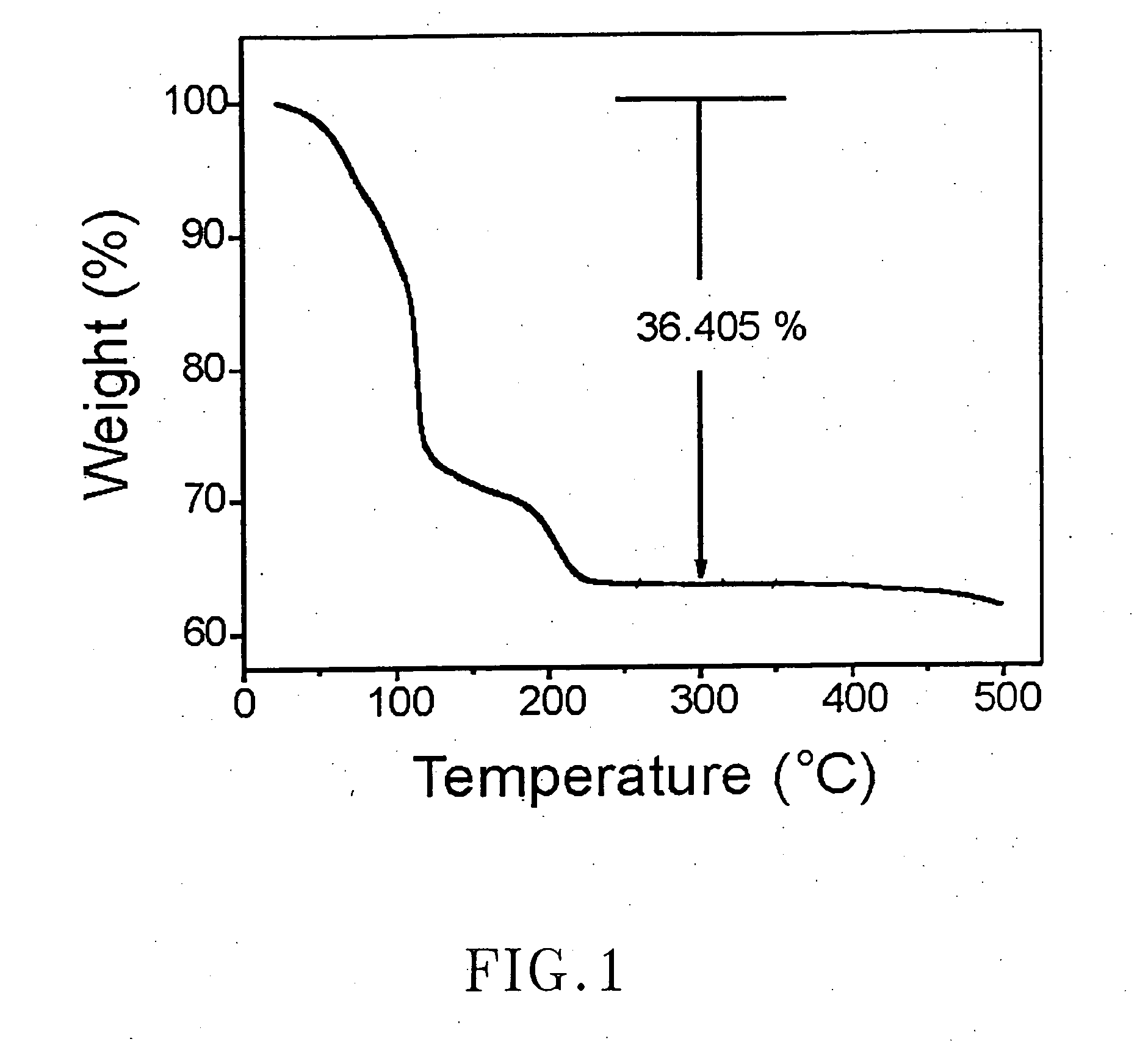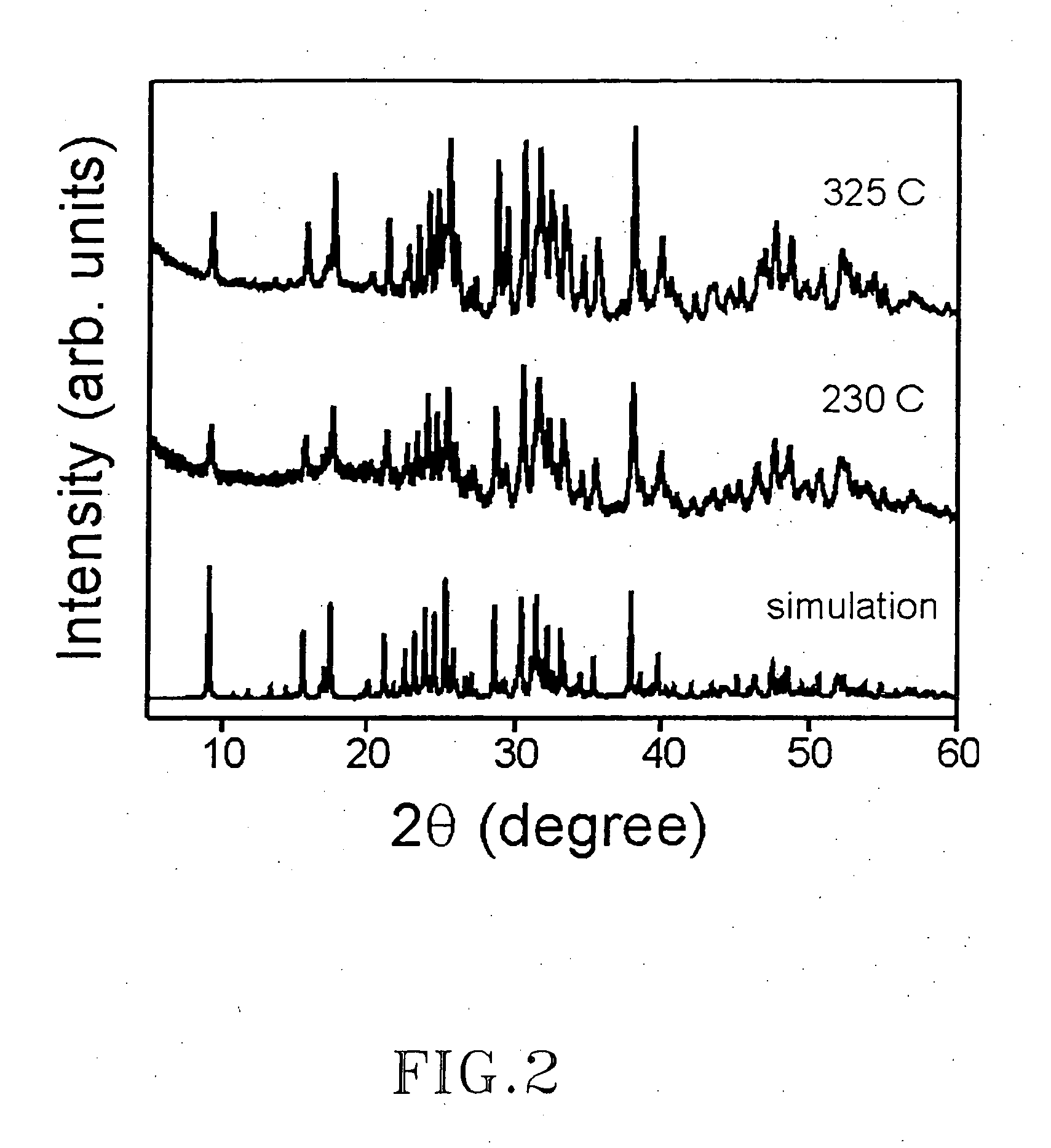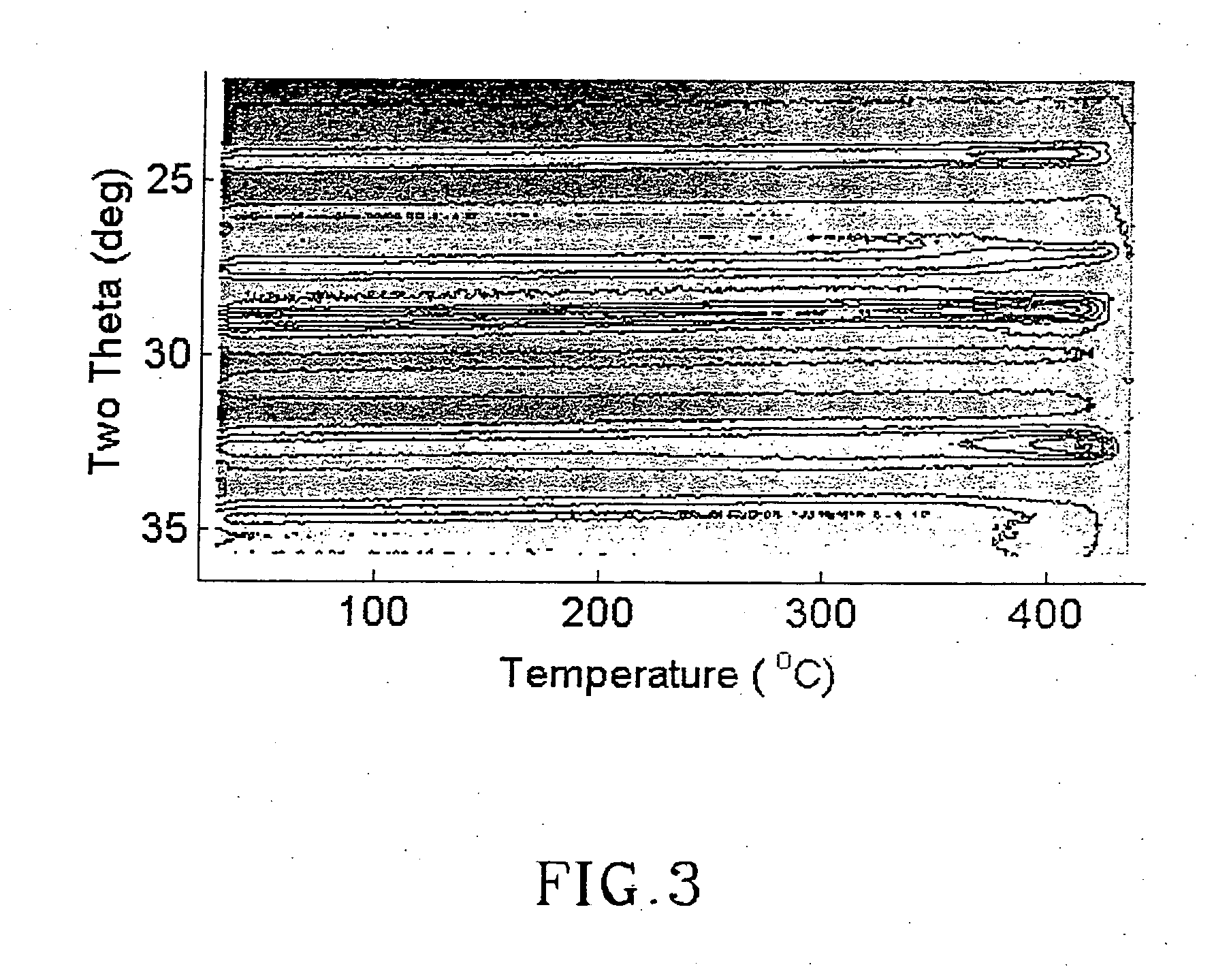Solution-based deposition process for metal chalcogenides
a technology of metal chalcogenide and solution, which is applied in the direction of liquid/solution decomposition chemical coating, transportation and packaging, sulfur compounds, etc., can solve the problems of metal chalcogenide isolation and the formation of single phase metal chalcogenide starting materials,
- Summary
- Abstract
- Description
- Claims
- Application Information
AI Technical Summary
Benefits of technology
Problems solved by technology
Method used
Image
Examples
example 2
Thin Film Deposition of KSb5S8
[0064] For thin-film deposition, the above-described solution proved too viscous for effective thin-film deposition by spin coating. The solution is therefore diluted by adding an additional 3 mL of distilled hydrazine. Films can then be spin coated from the hydrazine-based solution onto Si substrates (2 cm×2 cm), coated with approximately 100 nm of thermal oxide (SiOx). The substrates are cleaned using a Piranha process (4:1 H2SO4: 30% H2O2 by volume) to provide a clean hydrophilic surface so that the KSb5S8 solution adequately wets the surface during the spinning process. The films are spin coated in a nitrogen-filled drybox by depositing two drops of the chalcogenide-based solution on the substrate and spin coating at between 2500-5000 rpm. The exact spin speed influences the thickness of the resulting films. After spin coating, the resulting films are dried at 100° C. for approximately 5 min, then gradually heated to 225° C. over a period of 10 min...
example 3
SnS2
[0066] 2 mmol elemental Sn (237.4 mg; Aldrich, tin shot, 99.999%) are combined with 8 mmol elemental S (256.5 mg; Aldrich, 99.998%) and 4 mL anhydrous distilled hydrazine. The mixture is stirred at room temperature in a nitrogen-filled glove box (water and oxygen levels below 1 ppm) for a period of approximately 4 days, yielding a clear very pale yellow solution. The solution may be used for solution-processing of tin sulfide films and devices as described below. For bulk characterization, the solution was evaporated under flowing nitrogen gas for approximately 18 hr and further dried under vacuum, yielding approximately 591 mg of a white or pale yellow powder. Upon thermal decomposition of the precursor powder (˜40.5% weight loss), SnS2 (or SnS2-x) is recovered (FIGS. 5 and 6). FIG. 5 is a thermogravimetric analysis (TGA) scan for the hydrazine-based tin sulfide precursor, performed using a 2 C / min heating rate and a flowing nitrogen atmosphere. FIG. 6 is a powder X-ray diffra...
example 4
Thin Film Deposition of SnS2
[0067] Thin tin sulfide films are also deposited from an analogous solution to that described above. 0.12 mmol of Sn (14.24 mg; Aldrich, tin shot, 99.999%) are combined with 0.50 mmol S (16.03 mg; Aldrich, 99.998%) and 1.8 mL hydrazine (distilled). The mixture is stirred for approximately 2 days, yielding an essentially colorless solution. The films are spin-coated on Si substrates (2 cm×2 cm), each coated with approximately 40 nm of thermal oxide (SiOx), which have been cleaned using a Piranha process (4:1 H2SO4: 30% H2O2 by volume). The important aspect of the cleaning process is to provide a clean hydrophilic surface so that the tin sulfide solution will adequately wet the surface during the spinning process. The films are spin coated in a nitrogen-filled dry box by depositing two drops of the chalcogenide solution on the substrate and spin coating at between 1000-4000 rpm. The exact spin speed influences the thickness of the resulting film. After spi...
PUM
| Property | Measurement | Unit |
|---|---|---|
| Temperature | aaaaa | aaaaa |
| Temperature | aaaaa | aaaaa |
| Molar density | aaaaa | aaaaa |
Abstract
Description
Claims
Application Information
 Login to View More
Login to View More - R&D
- Intellectual Property
- Life Sciences
- Materials
- Tech Scout
- Unparalleled Data Quality
- Higher Quality Content
- 60% Fewer Hallucinations
Browse by: Latest US Patents, China's latest patents, Technical Efficacy Thesaurus, Application Domain, Technology Topic, Popular Technical Reports.
© 2025 PatSnap. All rights reserved.Legal|Privacy policy|Modern Slavery Act Transparency Statement|Sitemap|About US| Contact US: help@patsnap.com



